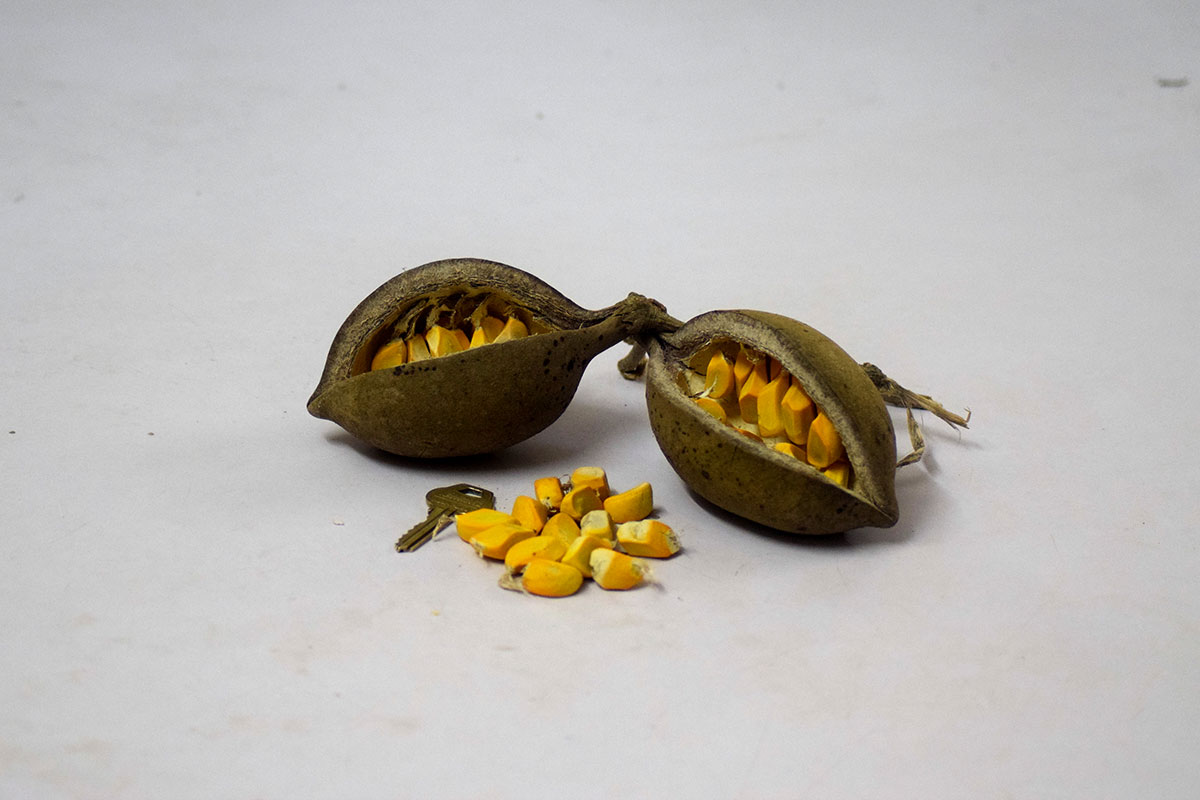
19 Dec Sterculia oblonga
Scientific name: Sterculia oblonga Mast.
Family: Malvaceae.
Distribution and conservation status: usually found in drier areas (with annual rainfall of about 1800 mm) of semi-deciduous and secondary forests of the tropical African belt, from Guinea and Liberia going east to the Central African Republic and south to Gabon, Congo, and northern DR Congo; VU due to over-exploitation and slow growth rate.
Common names: Yellow Sterculia (English), Oroforofo (Yoruba), Okoko (Edo).
Fruits/seeds: fruits consist of 4-5 woody follicles, 10-15 cm long, glabrescent and green-yellow-brown. The seeds are ovoid-shaped, 2.8±0.4 mm (SD) in diameter with a bright yellow and fleshy seed coat.
Fruiting time: September – March.
Seed extraction method: remove seeds from the pod.
Type of seed: recalcitrant with epigeal germination.
Sowing method: direct sowing.
Sowing medium: forest top soil, river sand and composted sawdust.
Germination period: 7-15 days but the germination rate can be low.
Germination percentage: 60-70% for fresh seed, decreasing to about 15% after 3 weeks.
Planting: full shade.
Growth and development: slow-growing with an average height of 30 cm per year, but a 9-year-old tree could be 9-15 m tall.
Notes: most pods fall near the parent tree with seeds still intact, but seeds are highly susceptible to rodent or bird attack.

